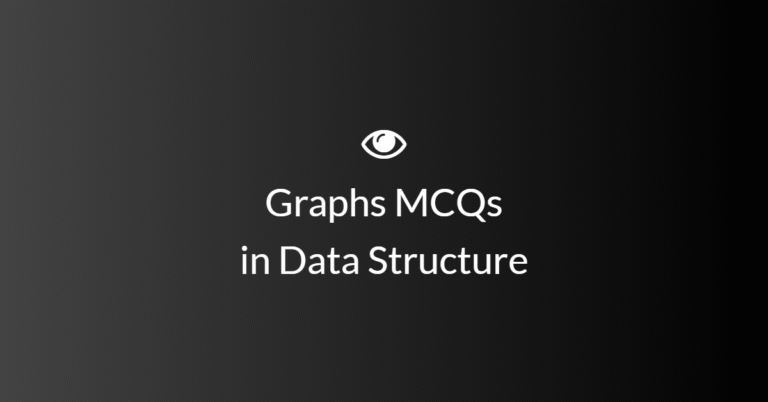1. What is the primary purpose of network cryptography?
a) To improve network speed
b) To ensure data confidentiality, integrity, and authenticity
c) To store data securely
d) To reduce bandwidth consumption
Answer: b) To ensure data confidentiality, integrity, and authenticity
2. Which of the following is a type of symmetric encryption?
a) RSA
b) AES
c) ECC
d) DSA
Answer: b) AES
3. In asymmetric cryptography, which key is used for encryption?
a) Private key
b) Public key
c) Session key
d) Master key
Answer: b) Public key
4. Which of the following is used to ensure the integrity of a message?
a) Encryption
b) Hashing
c) Digital signature
d) Symmetric encryption
Answer: b) Hashing
5. Which protocol is commonly used to secure communication over the internet?
a) HTTP
b) FTP
c) SSL/TLS
d) SMTP
Answer: c) SSL/TLS
6. What is the main disadvantage of symmetric encryption?
a) Slow encryption speed
b) Difficulty in key distribution
c) Inability to be used for authentication
d) It is computationally expensive
Answer: b) Difficulty in key distribution
7. Which encryption algorithm is widely used for secure email communication?
a) AES
b) RSA
c) DES
d) Blowfish
Answer: b) RSA
8. What is the output of a hashing algorithm?
a) Plaintext
b) Ciphertext
c) Fixed-length value (hash value)
d) Public key
Answer: c) Fixed-length value (hash value)
9. Which of the following is used for secure key exchange in asymmetric encryption?
a) AES
b) RSA
c) Diffie-Hellman
d) DES
Answer: c) Diffie-Hellman
10. What is the primary function of a Digital Signature?
a) To encrypt the message
b) To verify the sender’s authenticity
c) To ensure the data’s confidentiality
d) To provide public key infrastructure
Answer: b) To verify the sender’s authenticity
11. Which of the following is a popular hashing algorithm?
a) SHA
b) DES
c) RSA
d) AES
Answer: a) SHA
12. What does SSL stand for?
a) Secure Socket Layer
b) Secure Service Layer
c) Software Security Layer
d) Secure System Layer
Answer: a) Secure Socket Layer
13. What is a key feature of elliptic curve cryptography (ECC)?
a) It uses very long keys
b) It is computationally expensive
c) It provides the same security with shorter keys compared to RSA
d) It uses a symmetric encryption algorithm
Answer: c) It provides the same security with shorter keys compared to RSA
14. Which of the following is a property of a good cryptographic hash function?
a) It should produce a variable-length output
b) It should be a reversible function
c) It should produce a unique output for every input
d) It should produce a fixed-length output
Answer: d) It should produce a fixed-length output
15. What is the role of a certificate authority (CA) in SSL/TLS?
a) To verify the integrity of the message
b) To issue and verify digital certificates
c) To encrypt data
d) To distribute encryption keys
Answer: b) To issue and verify digital certificates
16. What type of encryption is used in WPA2 for wireless security?
a) AES
b) DES
c) RSA
d) Triple DES
Answer: a) AES
17. Which algorithm is typically used for hashing passwords?
a) RSA
b) AES
c) SHA-256
d) Diffie-Hellman
Answer: c) SHA-256
18. Which of the following cryptographic algorithms is asymmetric?
a) DES
b) AES
c) RSA
d) Blowfish
Answer: c) RSA
19. What is the main advantage of asymmetric encryption?
a) Faster processing
b) Better key management
c) No need for key exchange
d) Higher security with smaller keys
Answer: b) Better key management
20. Which of the following provides authentication and confidentiality in communication?
a) Symmetric encryption
b) Asymmetric encryption
c) Digital signatures
d) Hashing
Answer: b) Asymmetric encryption
21. What does the RSA algorithm rely on for security?
a) Elliptic curve math
b) Modular arithmetic and large prime numbers
c) Block ciphers
d) Random number generation
Answer: b) Modular arithmetic and large prime numbers
22. What is the purpose of a session key in cryptography?
a) To sign the messages
b) To encrypt data for a single session
c) To encrypt the private key
d) To authenticate users
Answer: b) To encrypt data for a single session
23. Which encryption method uses the same key for both encryption and decryption?
a) Asymmetric encryption
b) Symmetric encryption
c) Hashing
d) Digital signature
Answer: b) Symmetric encryption
24. What does “confidentiality” in cryptography refer to?
a) Ensuring the data is not modified
b) Ensuring only authorized parties can read the data
c) Verifying the sender’s identity
d) Ensuring that the data is encrypted
Answer: b) Ensuring only authorized parties can read the data
25. Which cryptographic technique is used to verify the integrity of data?
a) Encryption
b) Digital signature
c) Hashing
d) Symmetric key exchange
Answer: c) Hashing
26. Which of the following is true about symmetric encryption?
a) It requires a pair of keys: public and private
b) It is more efficient than asymmetric encryption
c) It is slower than asymmetric encryption
d) It requires a certificate authority
Answer: b) It is more efficient than asymmetric encryption
27. Which of the following is a disadvantage of using symmetric encryption?
a) It is slow
b) Key distribution is a problem
c) It requires two keys
d) It is computationally expensive
Answer: b) Key distribution is a problem
28. Which of the following best describes the function of a public key in asymmetric encryption?
a) It is used to decrypt the data
b) It is kept private and known only to the user
c) It is used to encrypt the data
d) It is used to sign the data
Answer: c) It is used to encrypt the data
29. What does the term “brute-force attack” refer to in cryptography?
a) Intercepting encrypted data
b) Trying all possible keys to decrypt data
c) Breaking the encryption algorithm
d) Stealing encryption keys from a user
Answer: b) Trying all possible keys to decrypt data
30. Which of the following is an example of a cryptographic key exchange protocol?
a) RSA
b) SHA-256
c) Diffie-Hellman
d) AES
Answer: c) Diffie-Hellman
31. What is a potential risk of weak encryption algorithms?
a) Slower performance
b) Easier to decrypt the data by attackers
c) Higher costs
d) Complexity in implementation
Answer: b) Easier to decrypt the data by attackers
32. Which encryption algorithm is considered to be quantum-safe?
a) AES
b) RSA
c) ECC
d) Lattice-based cryptography
Answer: d) Lattice-based cryptography
33. In which layer of the OSI model does SSL/TLS operate?
a) Network Layer
b) Transport Layer
c) Application Layer
d) Data Link Layer
Answer: b) Transport Layer
34. What is the main purpose of a Digital Certificate?
a) To encrypt data
b) To verify the authenticity of the public key
c) To generate encryption keys
d) To hash data
Answer: b) To verify the authenticity of the public key
35. Which of the following is a characteristic of a good encryption key?
a) Short length
b) Easily guessable
c) Random and unpredictable
d) Static and unchanging
Answer: c) Random and unpredictable
36. What is the function of a nonce in cryptographic protocols?
a) To create a hash value
b) To ensure unique encryption for each session
c) To generate private keys
d) To validate digital signatures
Answer: b) To ensure unique encryption for each session
37. Which of the following is used for data integrity verification in SSL/TLS?
a) Hash functions
b) Public key
c) Session key
d) Diffie-Hellman
Answer: a) Hash functions
38. Which of the following is true about encryption key length?
a) A longer key length generally offers better security
b) A longer key length reduces encryption speed
c) A longer key length is always better
d) Both a) and b) are correct
Answer: d) Both a) and b) are correct
39. In which scenario is symmetric encryption most commonly used?
a) Secure email communication
b) Secure file storage
c) Digital signatures
d) Secure key exchange
Answer: b) Secure file storage
40. What is the purpose of the TLS handshake?
a) To verify the integrity of the data
b) To establish a secure connection between client and server
c) To authenticate the sender’s identity
d) To encrypt the data
Answer: b) To establish a secure connection between client and server
41. Which of the following is a hashing algorithm used in digital certificates?
a) SHA-256
b) DES
c) AES
d) RSA
Answer: a) SHA-256
42. What is the primary function of a cryptographic algorithm?
a) To generate keys
b) To prevent unauthorized access to data
c) To sign messages
d) To exchange keys securely
Answer: b) To prevent unauthorized access to data
43. What is the primary benefit of using Elliptic Curve Cryptography (ECC)?
a) It requires longer keys than RSA
b) It is computationally more efficient with shorter keys
c) It is easier to implement
d) It is more secure than AES
Answer: b) It is computationally more efficient with shorter keys
44. In which type of cryptography does the same key encrypt and decrypt the data?
a) Asymmetric
b) Symmetric
c) Hybrid
d) Quantum
Answer: b) Symmetric
45. What is the main security feature provided by HTTPS?
a) Data compression
b) Data integrity and confidentiality
c) Session management
d) Speed optimization
Answer: b) Data integrity and confidentiality
46. What is the term for the process of transforming plaintext into ciphertext?
a) Decryption
b) Hashing
c) Encryption
d) Key generation
Answer: c) Encryption
47. Which of the following is true about Digital Signatures?
a) They ensure confidentiality
b) They authenticate the identity of the sender
c) They are created using symmetric encryption
d) They are used to generate encryption keys
Answer: b) They authenticate the identity of the sender
48. In which cryptographic algorithm is the RSA public key used for encryption?
a) AES
b) RSA
c) Diffie-Hellman
d) ElGamal
Answer: b) RSA
49. What does the term “PKI” stand for in network cryptography?
a) Public Key Infrastructure
b) Private Key Interface
c) Protected Key Interchange
d) Public Key Interface
Answer: a) Public Key Infrastructure
50. Which of the following algorithms is primarily used for encrypting web traffic?
a) AES
b) RSA
c) SSL/TLS
d) SHA-256
Answer: c) SSL/TLS



